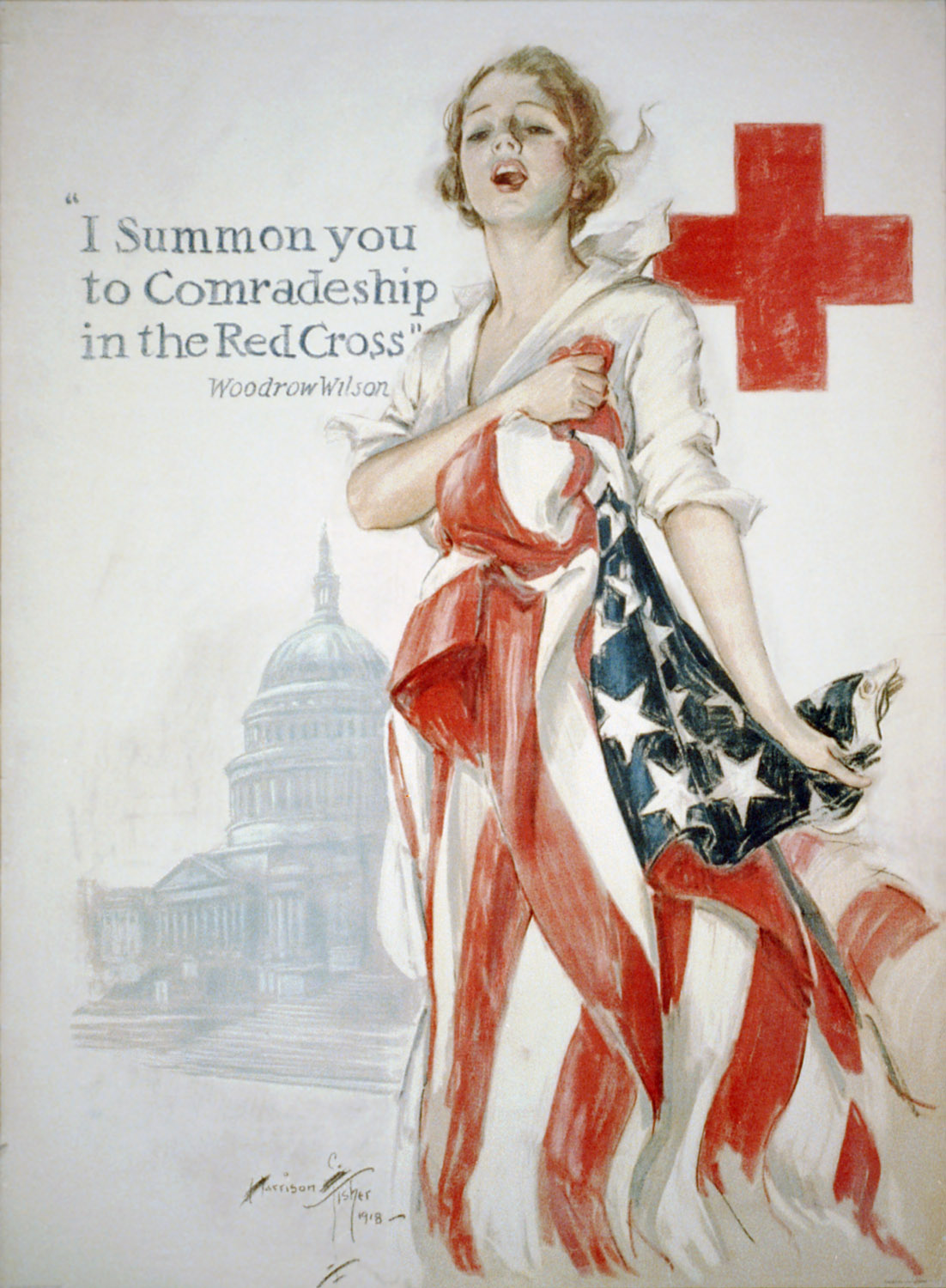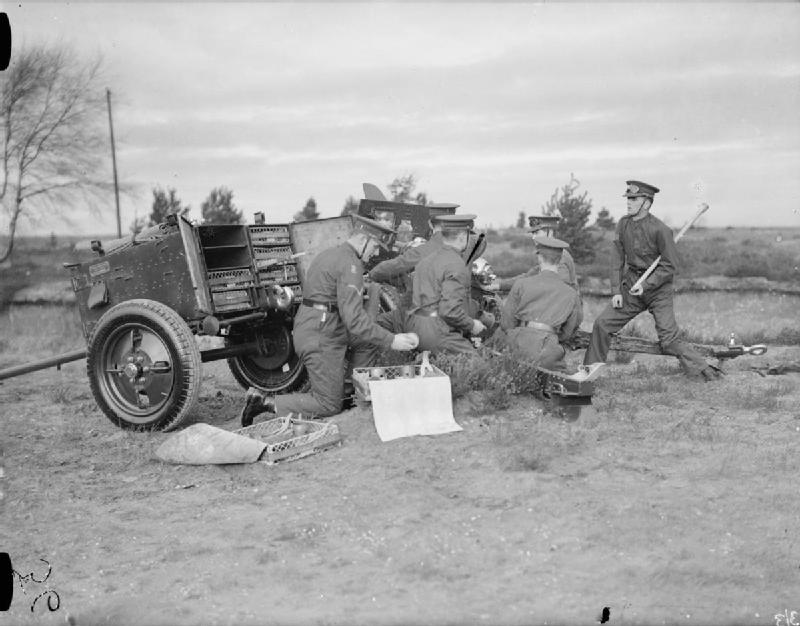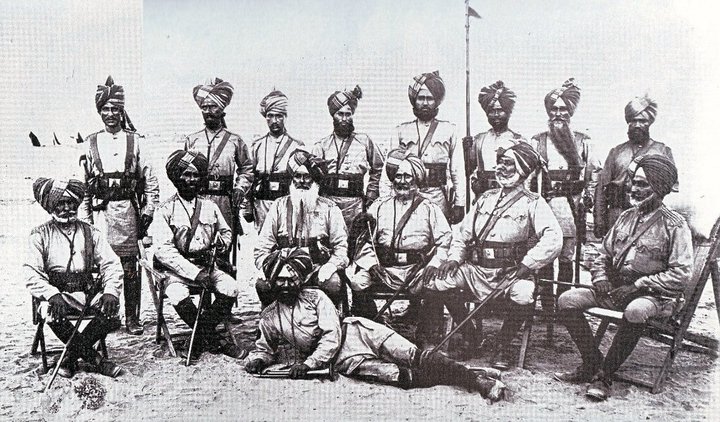|
1st Indian Cavalry Division
The 1st Indian Cavalry Division was a division of the British Indian Army which was formed at the outbreak of the First World War. It served on the Western Front, and was renamed the 4th Cavalry Division on 26 November 1916. In March 1918, the 4th Cavalry Division was disbanded; the British units remained in France and the Indian units were sent to Egypt to help form the 1st Mounted Division. History The division sailed for France from Bombay on 16 October 1914 under the command of Major General Hew Fanshawe. The division was re-named the 4th Cavalry Division in November 1916. During the war, the division served in the trenches as infantry. A large number of early officer casualties affected the division's later performance. British officers who understood the language, customs and psychology of their men could not be quickly replaced and the alien environment of the Western Front affected the soldiers. The division served in France and Flanders, held in reserve for the expec ... [...More Info...] [...Related Items...] OR: [Wikipedia] [Google] [Baidu] |
British Raj
The British Raj (; from Hindi ''rāj'': kingdom, realm, state, or empire) was the rule of the British Crown on the Indian subcontinent; * * it is also called Crown rule in India, * * * * or Direct rule in India, * Quote: "Mill, who was himself employed by the British East India company from the age of seventeen until the British government assumed direct rule over India in 1858." * * and lasted from 1858 to 1947. * * The region under British control was commonly called India in contemporaneous usage and included areas directly administered by the United Kingdom, which were collectively called British India, and areas ruled by indigenous rulers, but under British paramountcy, called the princely states. The region was sometimes called the Indian Empire, though not officially. As ''India'', it was a founding member of the League of Nations, a participating nation in the Summer Olympics in 1900, 1920, 1928, 1932, and 1936, and a founding member of the United Nations in San F ... [...More Info...] [...Related Items...] OR: [Wikipedia] [Google] [Baidu] |
17th Lancers
The 17th Lancers (Duke of Cambridge's Own) was a cavalry regiment of the British Army, raised in 1759 and notable for its participation in the Charge of the Light Brigade during the Crimean War. The regiment was amalgamated with the 21st Lancers to form the 17th/21st Lancers in 1922. History Seven Years War In 1759, Colonel John Hale of the 47th Foot was ordered back to Britain with General James Wolfe's final dispatches and news of his victory in the Battle of Quebec in September 1759. After his return, he was rewarded with land in Canada and granted permission to raise a regiment of light dragoons. He formed the regiment in Hertfordshire on 7 November 1759 as the 18th Regiment of (Light) Dragoons, which also went by the name of Hale's Light Horse.Frederick, p. 36 The admiration of his men for General Wolfe was evident in the cap badge Colonel Hale chose for the regiment: the Death's Head with the motto "Or Glory". The regiment saw service in Germany in 1761 and was ... [...More Info...] [...Related Items...] OR: [Wikipedia] [Google] [Baidu] |
1st King's Dragoon Guards
The 1st King's Dragoon Guards was a cavalry regiment in the British Army. The regiment was raised by Sir John Lanier in 1685 as the 2nd Queen's Regiment of Horse, named in honour of Queen Mary, consort of King James II. It was renamed the 2nd King's Own Regiment of Horse in 1714 in honour of George I. The regiment attained the title 1st King's Dragoon Guards in 1751. The regiment served as horse cavalry until 1937 when it was mechanised with light tanks. The regiment became part of the Royal Armoured Corps in 1939. After service in the First World War and the Second World War, the regiment amalgamated with the 2nd Dragoon Guards (Queen's Bays) in 1959 to form the 1st The Queen's Dragoon Guards. History Early history The regiment was raised by Sir John Lanier in 1685 as Lanier's Regiment of Horse or the 2nd Queen's Regiment of Horse, named in honour of Queen Mary, consort of King James II, as part of the response to the Monmouth Rebellion. The regiment saw action at the Battle ... [...More Info...] [...Related Items...] OR: [Wikipedia] [Google] [Baidu] |
8th (Lucknow) Cavalry Brigade
The Lucknow Cavalry Brigade was a cavalry brigade of the British Indian Army formed in 1911 as a result of the Kitchener Reforms. It was mobilized as 8th (Lucknow) Cavalry Brigade at the outbreak of the First World War as part of the 1st Indian Cavalry Division and departed for France. It served on the Western Front with the division until it was broken up in March 1918. The brigade was reformed in April 1920 and broken up in 1923. History The Kitchener Reforms, carried out during Lord Kitchener's tenure as Commander-in-Chief, India (1902–09), completed the unification of the three former Presidency armies, the Punjab Frontier Force, the Hyderabad Contingent and other local forces into one Indian Army. Kitchener identified the Indian Army's main task as the defence of the North-West Frontier against foreign aggression (particularly Russian expansion into Afghanistan) with internal security relegated to a secondary role. The Army was organized into divisions and brigade ... [...More Info...] [...Related Items...] OR: [Wikipedia] [Google] [Baidu] |
Comrades France (Photo 24-158)
The term ''comrade'' (russian: товарищ, tovarisch) generally means 'mate', 'colleague', or 'ally', and derives from the Spanish and Portuguese, term , literally meaning 'chamber mate', from Latin , meaning 'chamber' or 'room'. It may also specifically mean "fellow soldier". Political use of the term was inspired by the French Revolution, after which it grew into a form of address between socialists and workers. Since the Russian Revolution, popular culture in the Western world has often associated it with communism. Background Upon abolishing the titles of nobility in France, and the terms and (literally, 'my lord' and 'my lady'), the revolutionaries employed the term for men and for women (both meaning 'citizen') to refer to each other. The deposed King Louis XVI, for instance, was referred to as to emphasize his loss of privilege. When the socialist movement gained momentum in the mid-19th century, socialists elsewhere began to look for a similar egalitarian alte ... [...More Info...] [...Related Items...] OR: [Wikipedia] [Google] [Baidu] |
A Battery, Royal Horse Artillery
A Battery (The Chestnut Troop) Royal Horse Artillery is the senior Battery in the British Army's Royal Artillery and is part of 1st Regiment Royal Horse Artillery. The Chestnut Troop is currently based in Assaye Barracks in Tidworth Camp. The unit is currently equipped as a Close Support Artillery Battery, with the AS-90 Self-propelled gun. History Formation and early years A Troop, Royal Horse Artillery was raised as The Chestnut Troop at Woolwich on 1 February 1793. In 1798 the troop saw action in the Irish Rebellion and in 1799 it fought in the Netherlands. In 1806, Hew Dalrymple Ross assumed command of the unit which he led during campaigns in Spain, Portugal, France and at Waterloo. Ross was later knighted and promoted to field marshal. After 1809, it fought in the Peninsula War. Between 1855 and 1856 it fought in the Crimean War. World War I The outbreak of the First World War saw the unit, now enlarged to a battery, deployed to France in 1914. It served during all four y ... [...More Info...] [...Related Items...] OR: [Wikipedia] [Google] [Baidu] |
30th Lancers (Gordon's Horse)
The 8th Light Cavalry traces its origins from the 8th King George's Own Light Cavalry which was formed in 1922 by the amalgamation of the 26th King George's Own Light Cavalry and the 30th Lancers following a re-organisation of the Indian Cavalry Corps. Both regiments were regular cavalry units that had had long and distinguished records in the British Indian Army prior to their amalgamation. During World War II the regiment was converted into an armoured car unit and served during the Burma campaign. After India gained Independence the regiment was named 8th Light Cavalry.The regiment is the third oldest armoured regiment in India and is amongst the most highly decorated regiments in the country. 26th King George’s Own Light Cavalry The 26th King George's Own Light Cavalry was originally raised as the 5th Regiment Madras Native Cavalry on 23 October 1787 as part of the Madras Presidency Army. In 1788, it was re-designated as the 1st Madras Native Cavalry and in 1816 its name was ... [...More Info...] [...Related Items...] OR: [Wikipedia] [Google] [Baidu] |
9th Hodson's Horse
4th Horse (Hodson's Horse) is a part of the Armoured Corps of the Indian Army, which had its beginnings as an irregular cavalry regiment during the time of the Indian Rebellion of 1857. Formation The regiment was raised during the turbulent times of the Indian Rebellion of 1857. During the siege of Delhi, on 19 May 1857, an order was issued by the Commander-in-Chief, Major General George Anson to appoint Lieutenant (later Brevet Major) William Stephen Raikes Hodson as the Commandant of a corps of Irregular Horse, which he was directed to raise, while at Kurnaul. Hodson sought assistance from Robert Montgomery, Judicial Commissioner of the Punjab. Montgomery asked two Sirdars to raise a rissalah (troop) each, and he raised one himself. The three rissalahs left for Delhi on 23 June 1857 under the command of Man Singh, who was Risaldar-Major of the 1st Regiment from 1866 to 1877. Mr Montgomery sent two more rissalahs on 9 July 1857. The troops were mainly from the Lahore an ... [...More Info...] [...Related Items...] OR: [Wikipedia] [Google] [Baidu] |
8th (King's Royal Irish) Hussars
The 8th King's Royal Irish Hussars was a cavalry regiment in the British Army, first raised in 1693. It saw service for three centuries including the First and Second World Wars. The regiment survived the immediate post-war reduction in forces, and went on to distinguish itself in the battles of the Korean War, but was recommended for amalgamation in the 1957 Defence White Paper prepared by Duncan Sandys. The regiment was amalgamated with the 4th Queen's Own Hussars, to form the Queen's Royal Irish Hussars in 1958. History Formation and War of Spanish Succession The regiment was first raised by Henry Conyngham as Henry Conyngham's Regiment of Dragoons in Derry in 1693, and ranked as the 8th Dragoons. They soldiered at home as part of the Irish Establishment but were deployed to Spain in 1704 to take part in the War of the Spanish Succession. The regiment took part in a skirmish near Tanarite at which Henry Conyngham was killed: Robert Killigrew took over but was also kill ... [...More Info...] [...Related Items...] OR: [Wikipedia] [Google] [Baidu] |
2nd Indian Cavalry Division
The 2nd Indian Cavalry Division was a division of the British Indian Army formed at the outbreak of World War I. It served on the Western Front, being renamed as 5th Cavalry Division on 26 November 1916. In March 1918, the 5th Cavalry Division was broken up. The British and Canadian units remained in France and the Indian elements were sent to Egypt to help constitute 2nd Mounted Division. History The division sailed for France from Bombay on 16 October 1914, under the command of Major General G A Cookson. During the war the division would serve in the trenches as infantry. Due to the difference on troop levels each cavalry brigade, once dismounted, formed a dismounted regiment. In March 1916 the 2nd Indian Cavalry Division was attached to the British Fourth Army. On 1 July 1916 the 9th (Secunderabad) Cavalry Brigade moved into a reserve position on the Somme, ready to exploit any breakthrough. The same brigade was sent up again on 14 July, to Montauban to support the atta ... [...More Info...] [...Related Items...] OR: [Wikipedia] [Google] [Baidu] |
3rd (Ambala) Cavalry Brigade
The Ambala Cavalry Brigade was a cavalry brigade of the British Indian Army formed in 1904 as a result of the Kitchener Reforms. It was mobilized as 3rd (Ambala) Cavalry Brigade at the outbreak of the First World War as part of the 1st Indian Cavalry Division and departed for France. It served on the Western Front with the 1st and 2nd Indian Cavalry Divisions until it was broken up in March 1918. History The Kitchener Reforms, carried out during Lord Kitchener's tenure as Commander-in-Chief, India (1902–09), completed the unification of the three former Presidency armies, the Punjab Frontier Force, the Hyderabad Contingent and other local forces into one Indian Army. Kitchener identified the Indian Army's main task as the defence of the North-West Frontier against foreign aggression (particularly Russian expansion into Afghanistan) with internal security relegated to a secondary role. The Army was organized into divisions and brigades that would act as field formatio ... [...More Info...] [...Related Items...] OR: [Wikipedia] [Google] [Baidu] |
Squadron (army)
A squadron was historically a cavalry Subunit (military), subunit, a company or battalion-sized military formation. The term is still used to refer to modern cavalry Unit (military), units, and is also used by other arms and services (frequently Squadron (aviation), aviation, also Squadron (naval), naval). In some countries, including Italian Army, Italy, the name of the battalion-level cavalry unit translates as "''Squadron Group''". United States In the modern United States Army, a squadron is an armored cavalry, air cavalry, or other reconnaissance unit whose organizational role parallels that of a battalion and is commanded by a Lieutenant colonel (United States), lieutenant colonel. Prior to the revisions in the US Army structure in the 1880s, US Cavalry regiments were divided into Company (military unit), companies, and the battalion was an administrative designation used only in garrison. The reorganizations converted companies to troops and battalions to squadrons, a ... [...More Info...] [...Related Items...] OR: [Wikipedia] [Google] [Baidu] |
.jpg)






.jpg)
